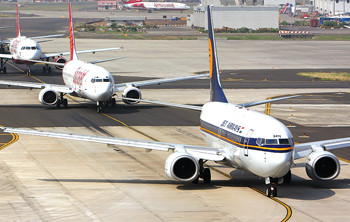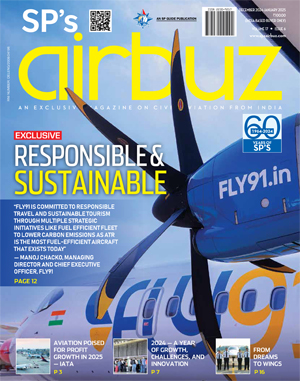Operations - Indian Civil Aviation 2008

The explosive growth in demand for air travel in the wake of a resurgent economy has provided powerful impetus to all segments of the Indian aviation industry. This in turn has made it absolutely essential to rapidly expand infrastructure to support growth of the industry as also to ensure safe and efficient handling of air traffic.
The airline industry
Inspired by the easing of controls and economic liberalization launched by the Narasimha Rao government, private airlines made their debut in the early nineties. Patterned on the Full Service Airline model, the only one available in India at that point in time, the new entrants found themselves plunging headlong into competition with the well entrenched national carrier Indian Airlines, which with the benefit of government protection, had an indifferent business model with negligible concern for profitability. Without immunity against losses, many of the new airlines in the private sector failed to survive. Only Jet Airways and Air Sahara continued, both accumulating sizeable losses over the years. Finally last year, Jet Airways acquired Air Sahara which is now operating as its subsidiary under the name JetLite.
The real turning point for the airline industry came with the introduction of a low cost model in August 2003 by Captain G.R. Gopinath, a prematurely retired officer of the Indian Army. Even without any prior experience of aviation related business, he first set up Deccan Aviation, an air charter company at Jakkur in Bengaluru. Later, he became the pioneer of the low cost concept in India which very rapidly caught the imagination of both the travelling public and the potential entrepreneur.
The civil aviation sector witnessed rapid growth in the Tenth Plan period (2002 - 2007). From a mere four major scheduled airlines in the beginning of 2003, there were as many as 11 in operation by mid 2007. It is also noteworthy that since the early nineties till date as many as 10 airlines have failed to survive and discontinued operations. Some of these later resurfaced as Low Cost Carriers under a new identity. The last to down shutters in 2007 was Delhibased Low Cost Carrier, Indus Airways. As a number of private airlines collapsed, the government raised entry barriers to allow only the serious players to enter the market. Also, with the merger of Air India with Indian and Kingfisher with Air Deccan, there are only seven major entities operational at present. Four smaller airlines have been granted license to operate as Regional Airlines.





